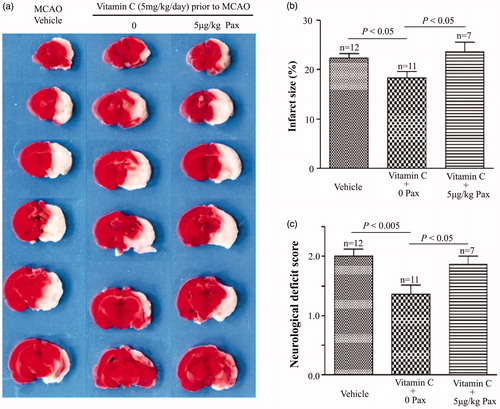Figures & data
Figure 1. Effect of long-term, low-dose vitamin C on MCAO induced infarct size and neurological deficit score. (a) Representative images of TTC stained brain slices obtained at 24 hr post-MCAO from MCAO rats pretreated with vitamin C at a dose of 0, 0.5, 5, 20 and 50 mg.kg−1.day−1 for 3 weeks. (b,c) Bars showing the relative infract size (b) or neurological deficit score (c) of MCAO rats pretreated with vitamin C at a dose of 0, 0.5, 5, 20 and 50 mg.kg−1.day−1 for 3 weeks. *p < 0.05; **p < 0.01; ***p < 0.005.
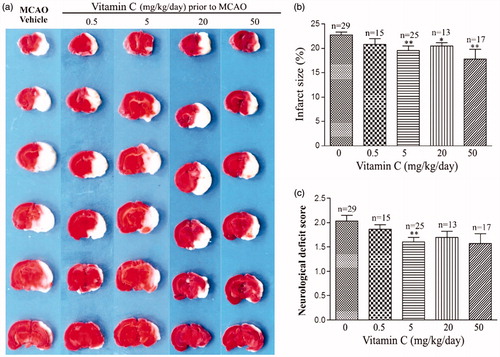
Figure 2. Application of vitamin C twice a day does not have more beneficial effect on ischemic stroke than that applied once a day. (a) Representative images of brain slices obtained at 24 hr post-MCAO from MCAO rats pretreated with vehicle as well as pretreated with vitamin C at a dose of 5 mg.kg−1 once a day or 2.5 mg.kg−1 twice a day for 3 weeks. (b,c) Bars showing the relative infract size (b) and neurological deficit score (c) of MCAO rats pretreated with vehicle and vitamin C at a dose of 5 mg.kg−1 once a day or 2.5 mg.kg−1 twice a day (2*2.5 mg.kg−1.day−1) for 3 weeks. *p < 0.05; **p < 0.01; ***p < 0.005.
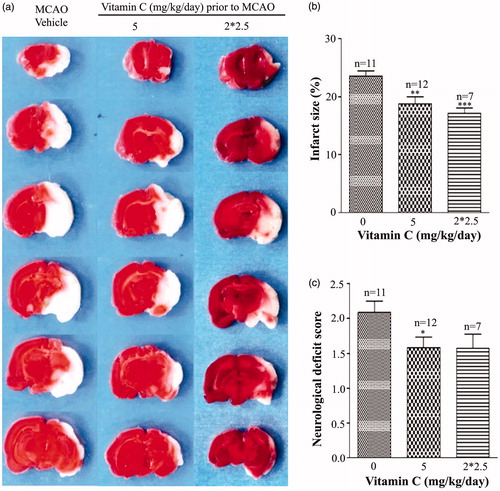
Figure 3. Effect of long-term and low dose pretreatment with vitamin C on the concentration of vitamin C in the serum and brain. Concentration of vitamin C in the serum (a) or right and left brain (b) for the rats treated with vehicle or treated with vitamin C at a dose of 5 mg.kg−1 once a day or 2.5 mg.kg−1 twice a day for three weeks. The concentration of vitamin C was measured 24 hr after the last administration of vitamin C. **p < 0.01, ***p < 0.005. (c–e) Concentration of vitamin C in the serum (c) and contralateral side (d) or ipsilateral side (e) of the brain for sham-operated, vehicle pretreated MCAO rats and vitamin C pretreated MCAO rats. Vitamin C was intraperitoneally administrated at a dose of 5 mg.kg−1 once a day or 2.5 mg.kg−1 twice a day for three weeks prior to MCAO. The concentration of vitamin C was measured 48 hr after the last administration of vitamin C.
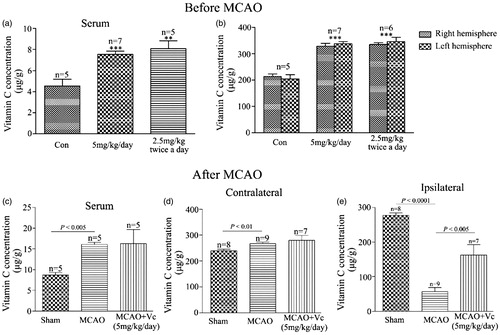
Figure 4. A single high dose vitamin C has no effect on MCAO. (a) Representative images of brain slices obtained at 24 hr post-MCAO from rats treated with vehicle or treated with a single high dose vitamin C (500 mg.kg−1) 24 hr before MCAO. (b,c) Bar graphs showing the relative infract size (b) and neurological deficit score (c) for a single high dose vitamin C-treated (500 mg.kg−1) vs vehicle-treated MCAO rats. (d,e) Vitamin C concentration in the serum (d) or brain tissue (e) of rats after 24 hr treament with vehicle or a single high dose vitamin C (500 mg.kg−1).
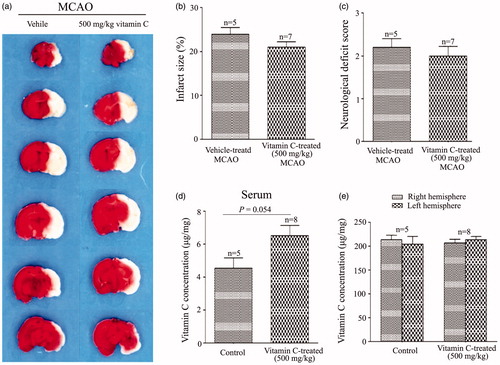
Figure 5. Vitamin C activates BKCa channels at the whole-cell level. (a–c) Representative whole-cell BKCa channel currents before (upper panel) and after 10 min (lower panel) application of 0 (a), 200 (b) and 500 (c) μM vitamin C in the bath solution at Ca2+ concentration of 1 μM. The currents were evoked by step depolarization from a hold potential of -80 mV to test potentials between −80 and +60 mV for 200 ms in 20 mV increments. (d) Ratio values (I/Io) of the whole-cell BKCa channel current at + 60 mV before (Io) and after 10 min (I) application of different concentration of vitamin C in the bath solution. **p < 0.01.

Figure 6. Vitamin C activates BKCa channels at the single-channel level. (a,b) Representative single channel current traces of the BKCa channels in the inside-out configuration at membrane potentials ranging from −80 mV to +60 mV with 20 mV increment before (a) and after application of 200 μM vitamin C (b) in the bath solution. Arrows indicate the level that all the channels are in their closed state. (c) The relationships between the single channel open probability (Po) of the BKCa channels and the membrane potentials in the absence and presence of 200 μM vitamin C are fitted with the Boltzmann equation (see text for detail). (d) Statistical data on Po of the channel at a voltage of +20 mV in the absence and presence of 50, 200, 500 and 1000 μM vitamin C. ***p < 0.001.
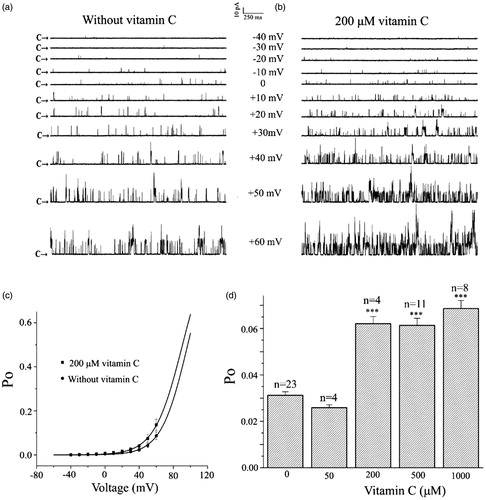
Figure 7. BKCa channel blocker Penitrem A (PA) suppresses the effect of vitamin C on MCAO rats. (a) Representative images of brain slices for vehicle-treated MCAO rats and vitamin C pretreated (5 mg.kg−1.day−1 for three weeks prior to MCAO) MCAO rats at 24 hr post-MCAO in the absence and presence of PA (0.4 and 4 μg.kg−1). (b,c) Bar graphs showing relative infarct size (b) and neurological deficit score (c) in vehicle-treated and vitamin C pretreated MCAO rats at 24 hr post-MCAO in the absence and presence of PA.
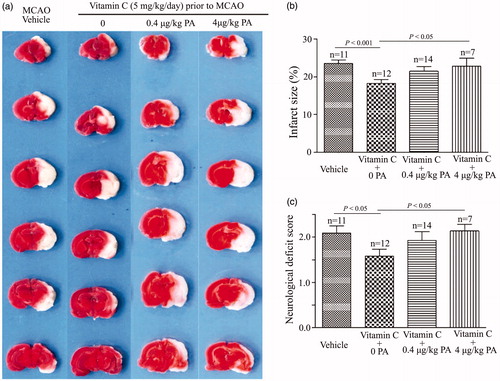
Figure 8. BKCa channel blocker paxiiline (Pax) suppresses the effect of vitamin C on MCAO rats. (a) Representative images of brain slices for vehicle-treated MCAO rats and vitamin C pretreated (5 mg.kg−1.day−1 for three weeks prior to MCAO) MCAO rats at 24 hr post-MCAO in the absence and presence of Pax (5 μg.kg−1). (b,c) Bar graphs showing relative infarct size (b) and neurological deficit score (c) in vehicle-treated and vitamin C pretreated MCAO rats at 24 hr post-MCAO in the absence and presence of Pax.
